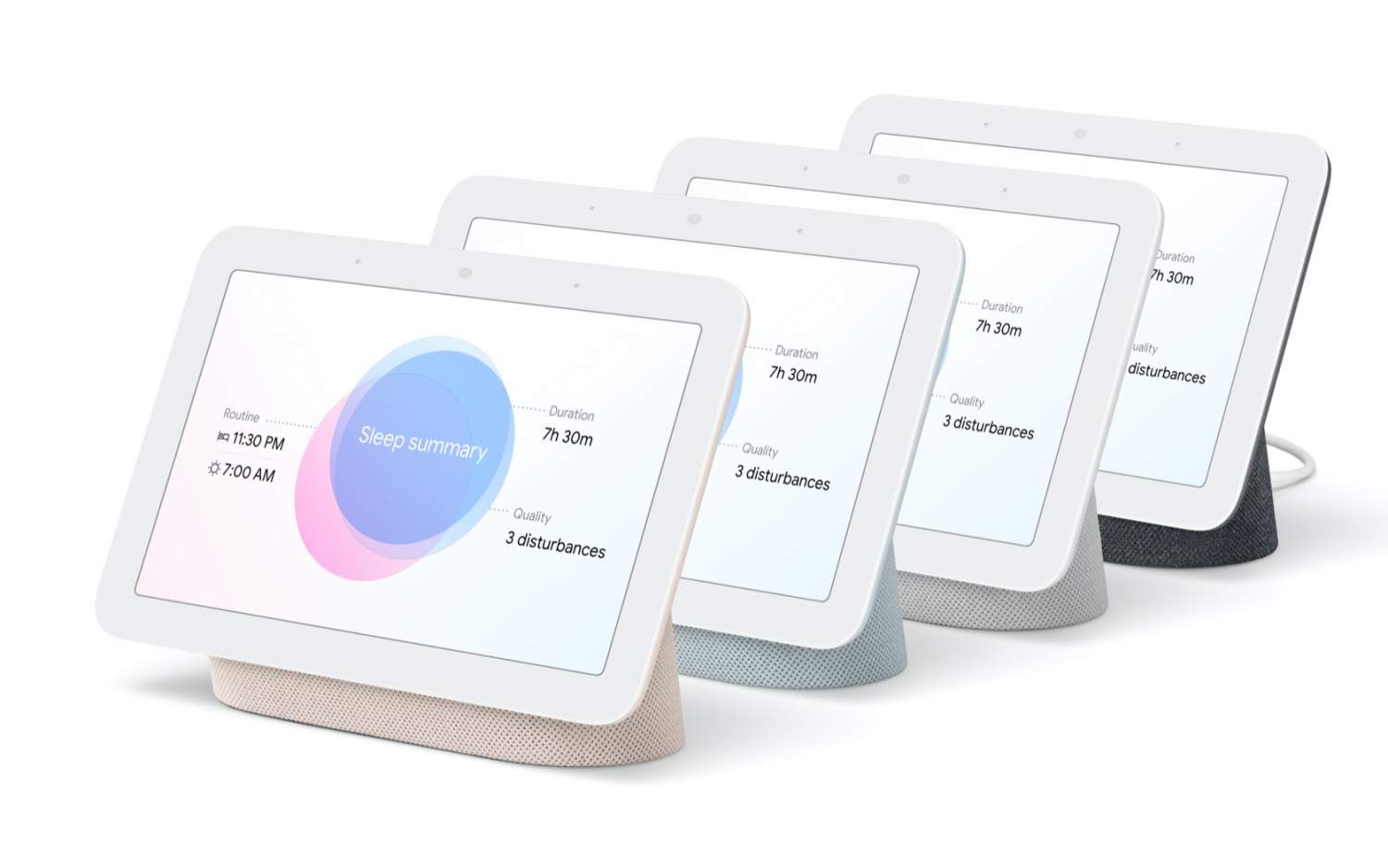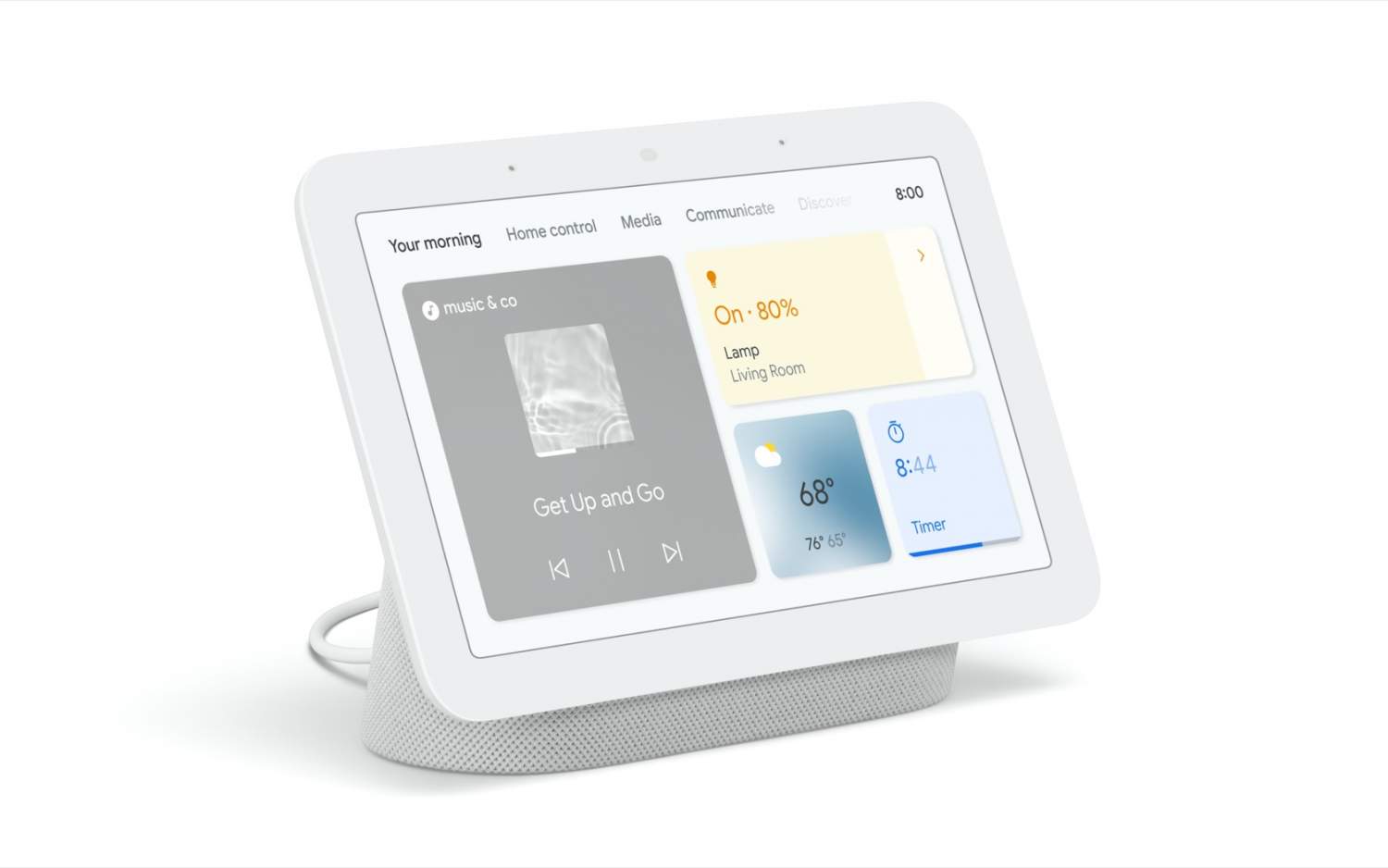Google's Second-Gen Nest Hub Tracks Sleep With No Wearable Required
Google has revealed its new second-generation Nest Hub, speeding up the Assistant, improving audio performance, and adding a new Sleep Sensing feature. The smart display still has a 7-inch touchscreen and a fabric-covered body, and still leaves out a camera for those with privacy in mind, but Google has added in a Soli motion sensor to make things interesting in the bedroom.
We've already seen Soli, of course, as a short-lived addition to Google's smartphones. The Pixel 4 used the gesture-recognizing radar sensor for media navigation and other hand controls, but its Motion Sense system failed to catch on. However its application in the new Nest Hub is far more interesting.

Sleep Sensing is night tracking without a wearable
The existing Nest Hub, the team at Google says, has long been a popular addition to the nightstand. Indeed, around 20-percent of the smart displays are currently used in a bedroom, in part because the absence of a camera means fewer privacy concerns. With the second-gen Nest Hub, a new Sleep Sensing feature promises to track sleep without being creepy about it.
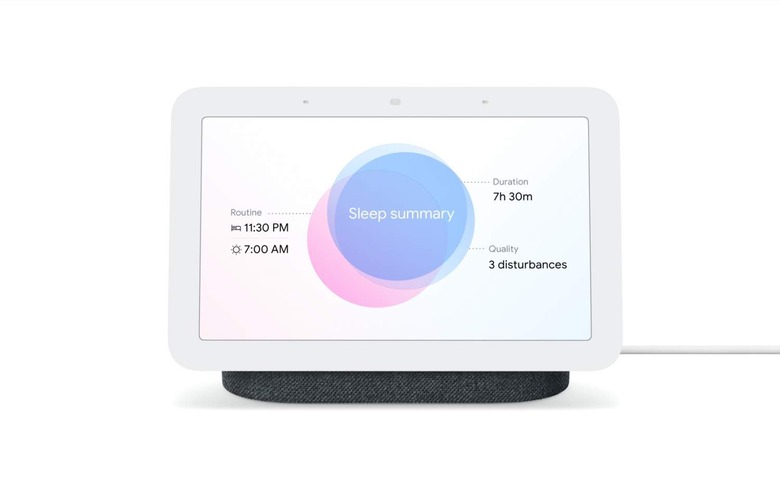
The low-energy radar sensor can track movement, but not what's moving: Soli can see even tiny, micrometer chest movements, and then use machine learning to understand how you're breathing, but it doesn't capture any personally identifiable information or images. The raw Soli data is combined with audio data from the new Nest Hub's three microphones, along with ambient light and temperature information, and that's all processed on-device. Only the sleep event data is then sent to Google.

One second-gen Nest Hub can track sleep for one person: you go through a short calibration process to begin with, so that it can learn where you sleep and then create a virtual tracking bubble to ignore whoever you might be sharing a bed with. You can have two Nest Hubs each tracking sleep from either side of the bed, and they shouldn't interfere. It's a matter of two taps to pause tracking, and it's also easy to delete the last night's data.

The result is a sleep report presented in the morning, which can show duration of sleep, consistency of the sleep schedule, how restful the night was, and how often you woke up. Sleep Sensing can also identify coughs and snores, and compare that with how disturbed your night was. If you're coughing or snorting more frequently, that can be flagged too, and data is shared with the Google Fit app for longer-term monitoring.

Over time, Google says, the new Nest Hub will learn your sleep patterns and be able to recommend an ideal sleep routine. Based on 14 nights of sleep data, it'll make suggestions for when to go to bed and when to set an alarm to get up. It might also encourage changes in lighting or setting a reminder to go to bed on time. Guidelines from the American Academy of Sleep Medicine will also be presented.
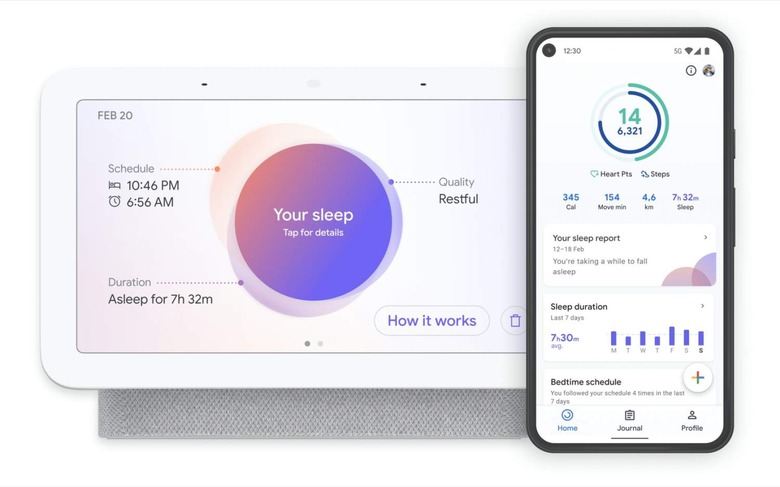
According to Google's trials, there's actually no statistical difference in the quality of the data Sleep Sensing gathers with Soli and the other sensors, compared to scientific polysomnographic studies. The new Nest Hub also delivered equal or better performance to consumer and clinical grade sleep trackers, the company says. If you've ever wanted to track how much rest you're getting, but struggle to fall asleep while wearing a watch or fitness band, this zero-contact method could be pretty appealing.
A faster, better-sounding smart display
Elsewhere, the Soli sensor is also being used for Motion Sense on the second-gen Nest Hub. It'll reach to quick gestures, for example, such as tapping the area in front of the display to pause music. A wave of the hand will be enough to snooze an alarm.
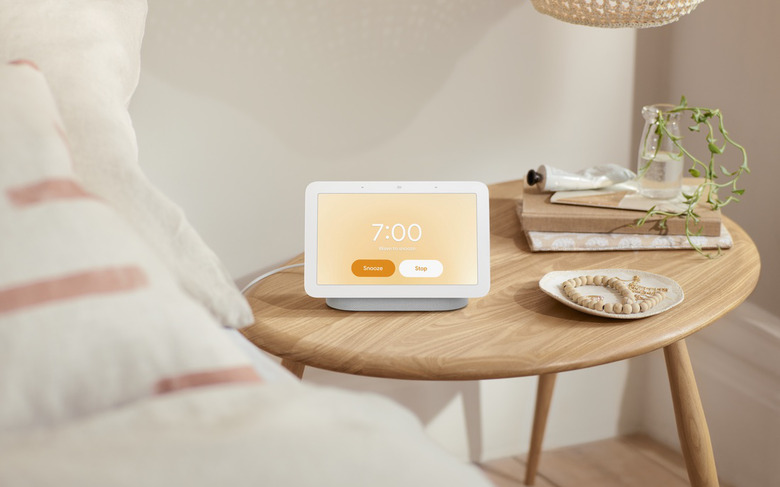
There's 50-percent more bass than before, borrowing the speaker tech from the Nest Audio, and it also follows that speaker in including a machine learning chip inside. That not only powers Sleep Sensing raw data processing, but can learn your most common commands to the Assistant and speed them up (at least, if you're in the US). The addition of a third microphone should improve Assistant pickup too.
Also inside is a Thread radio, which will eventually be enabled to support the Project Connected Home over IP (CHIP) standard.
Finally, there are some aesthetic tweaks. The 7-inch display now has an edgeless cover glass, while the plastic parts now use 54-percent post-consumer recycled plastic, and the fabrics are made from recycled PET plastic bottles. They're solution dyed – using less water – in four colors: Chalk, Charcoal, Sand, and Mist.
Second-gen Nest Hub Pricing and Availability
The second-generation Nest Hub will go up for preorder from today, priced at $99.99. It'll ship in the US, Canada, UK, Germany, France, and Australia from March 30.
As for Sleep Sensing, that'll be available to all owners as a free preview until next year, Google says. After that, it's likely to be integrated into a Fitbit premium plan, but we won't know full details until closer to that happening.

